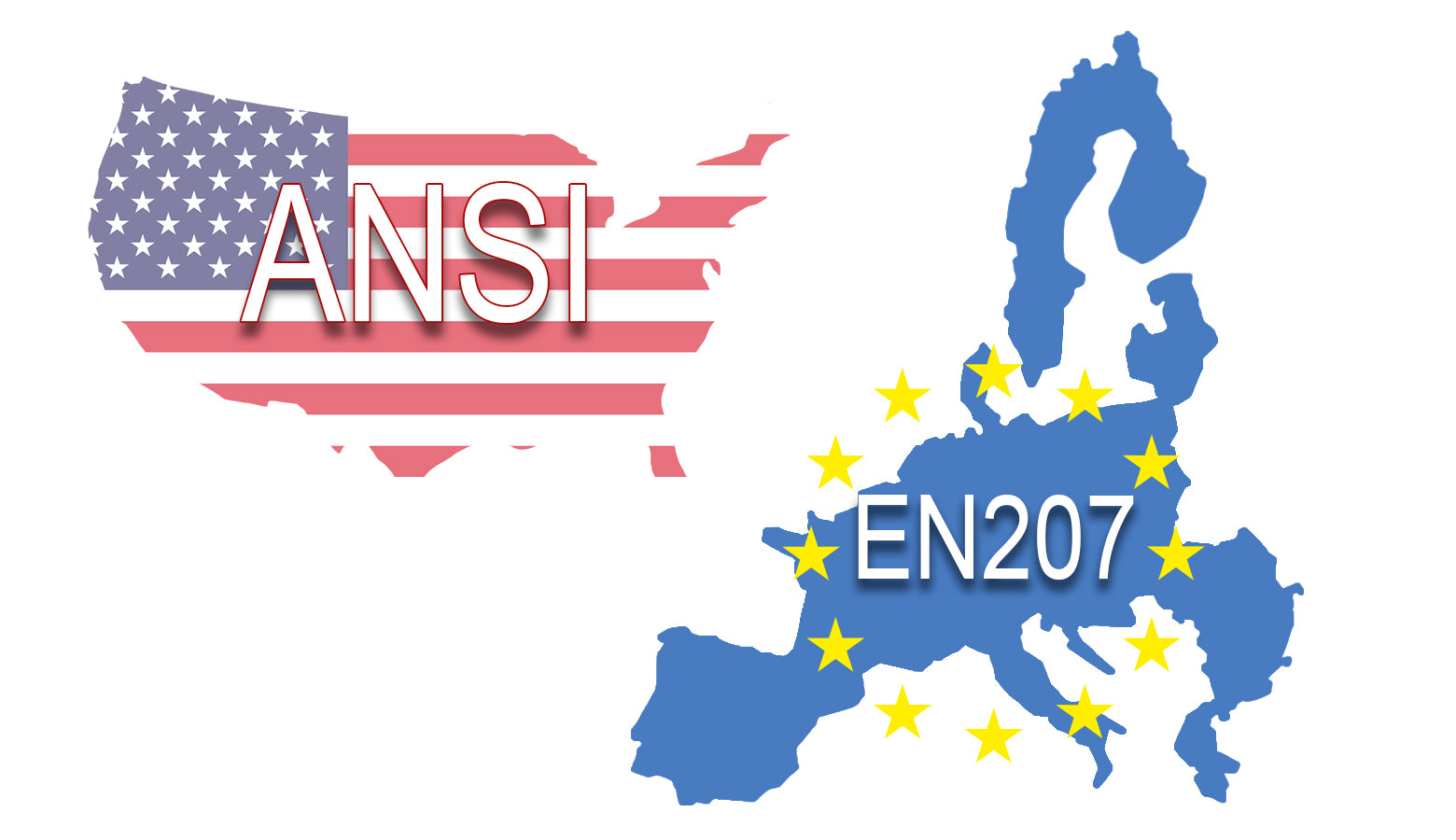In Laser Safety, there are two primary standards (or norms) that are followed, the American National Standards Institute (ANSI) and European Norms (EN), adopted by EU member countries. It should be noted OSHA also plays a role (we comply with both ANSI and OSHA). In this article, the following will be discussed:
- Where the standards are typically applied (ANSI Z136 vs EN207/208/60825)
- How the standards are created
- The major differences in the standards regarding laser safety
The most notable difference is that ANSI standards are applicable here in the United States and in North America, as well as most other places outside of the EU.

ANSI standards are created from volunteers and varied viewpoints and interests to achieve consensus on laser safety issues. Numerous organizations for the laser safety standards were represented (Government agencies (i.e. Federal Aviation Administration (FAA)), branches of the U.S. military, different laboratories (i.e. Los Alamos National Laboratory), and representatives from different organizations (i.e. American Dental Association). The Laser Institute of America (LIA) servers as the secretariat and publisher of the ANSI Z136 series on laser safety standards (of which we, Laser Safety Industries are a proud member of, see our LIA company profile here).
European Norms (EN) are formed in somewhat of a similar capacity with the material difference that where these “norms” are adopted, they become law. Additionally, an independent verifier must issue certification that a protection level is met.
***Note for branches of the military, federal, state, and local municipalities, if you happen to be looking at our selection for laser safety glasses, please call us before purchasing. Almost always the initial thought from the individuals making the purchases is our 130 double YAG filter - we do not recommend this and can supply numerous testimonials from different government agencies including pilots as to why (although we do not want to get to specific here).
Furthermore, we would like you to be making an informed decision so you understand what the trade-offs are and what is possible (and why).
Secondarily, we have been providing a product unlisted on our website for police with face shields.
If you have any questions, please Contact Us or call us directly at 888-752-7370 to speak to our in-house laser safety expert. We have years of experience in the industry and are happy to assist.
ANSI vs EN Continued
The largest difference is testing and corresponding certification process for a CE mark is on both the frame as well as the lens. The EN(s) have has taken a very conservative (and expensive) approach, requiring testing on each particular frame as well as the lens.
Our laser safety glasses (and other PPE) are for diffused viewing and incidental direct hits; utilizing laser safety eyewear or other PPE for direct viewing for long durations of time (more than 0.25s for visible lasers - the reflex of a blink of the eye) is not proper laser safety, and we never suggest looking directly at a laser, EVER, EVEN FOR EYEWEAR THAT HAVE CE CERTIFICATION (DIRECT HIT TESTING). This is not proper laser safety.
We illustrated the difference in CE marked specifications and the OD specifications that are common industry notation here in the United States and North America.

In the image directly above, the goggle on the left would have the specification of an LB6, as it would be the minimum of the frame and the lens Min(LB6,LB7). Our optical density markings on products that are not CE marked are only a statement about the lens, and the image on the right would be marked with an OD7.
More information on how to read specifications for CE marked products here.
Another minor difference is the appropriate markings. For information on the appropriate markings that come on CE marked products, please click here. For all other eyewear, we have appropriate laser safety markings.
The other two differences in the norms/standards, are the following:
- EN208 outlines laser safety eyewear for laser alignment. Our thoughts on the aiming beam can be found here.
- The concept of a nominal hazard zone ("NHZ") is mentioned in ANSI guidance, whereas it is never mentioned in the European Norms. It is therefore assumed in countries adopting these norms, that the worst-case scenario is assumed when preparing the appropriate laser safety controls.


